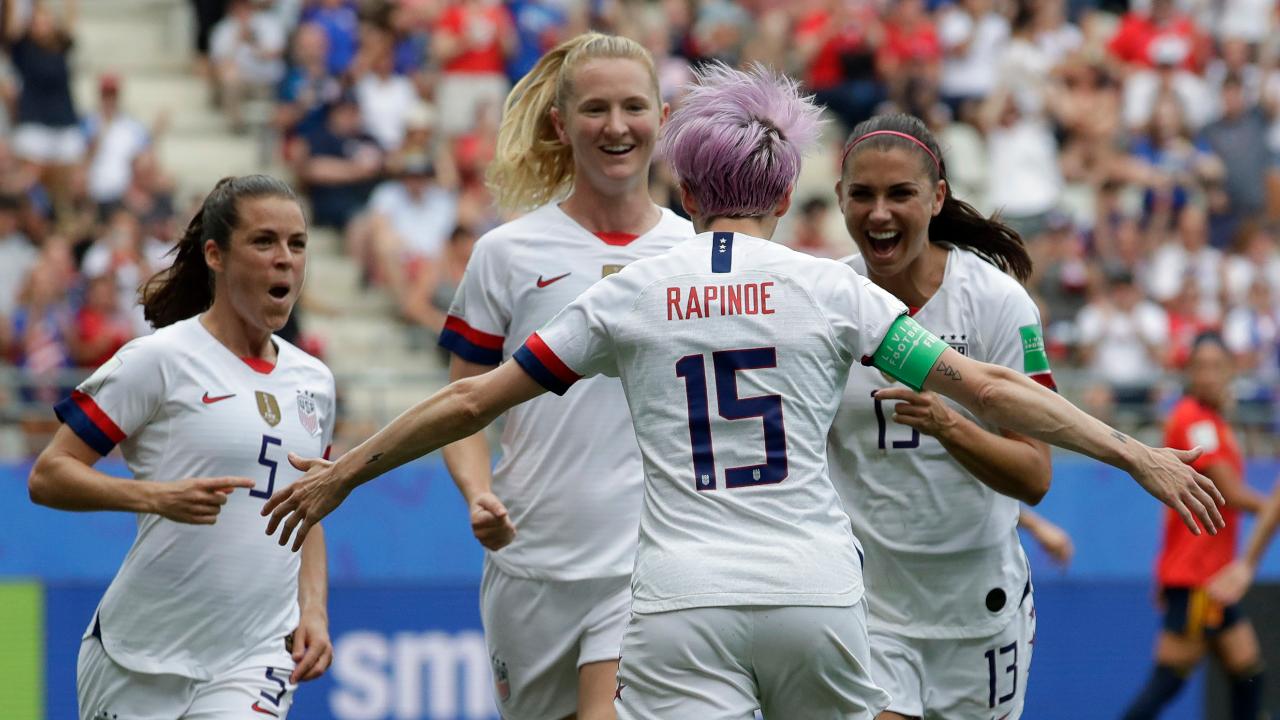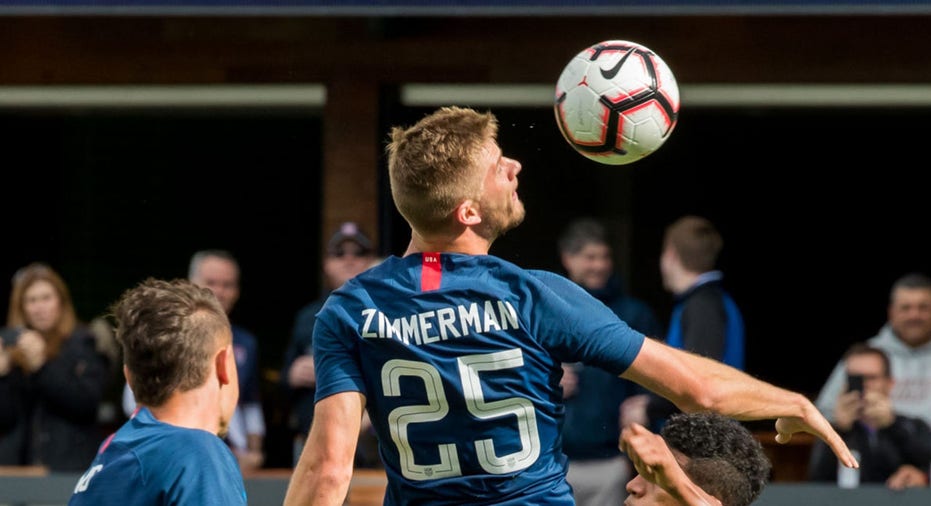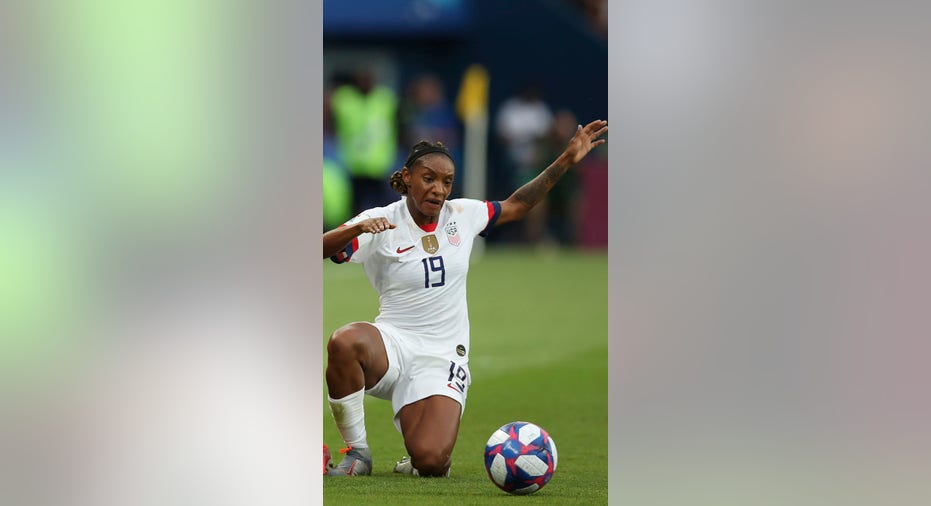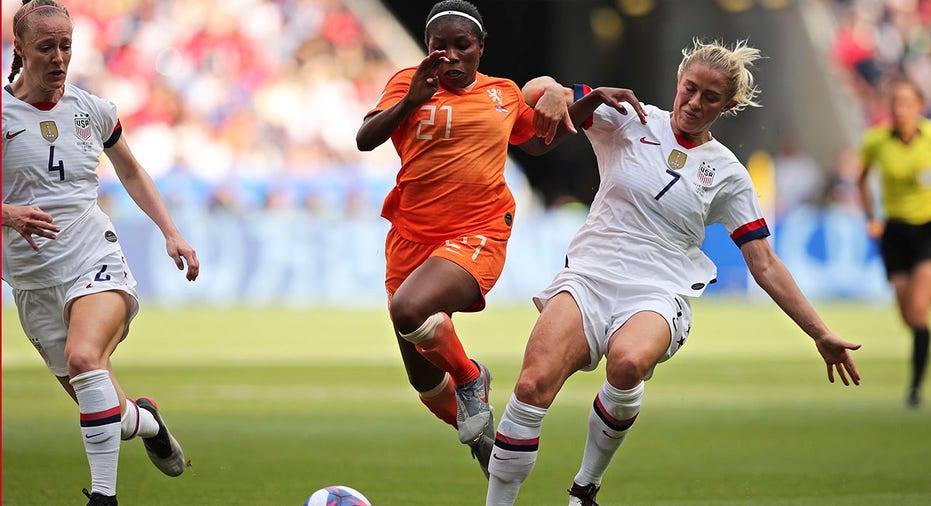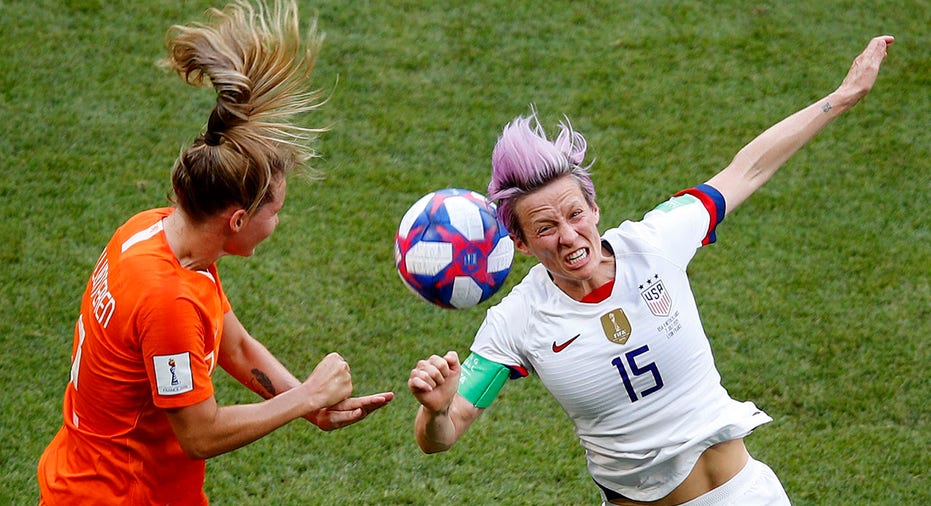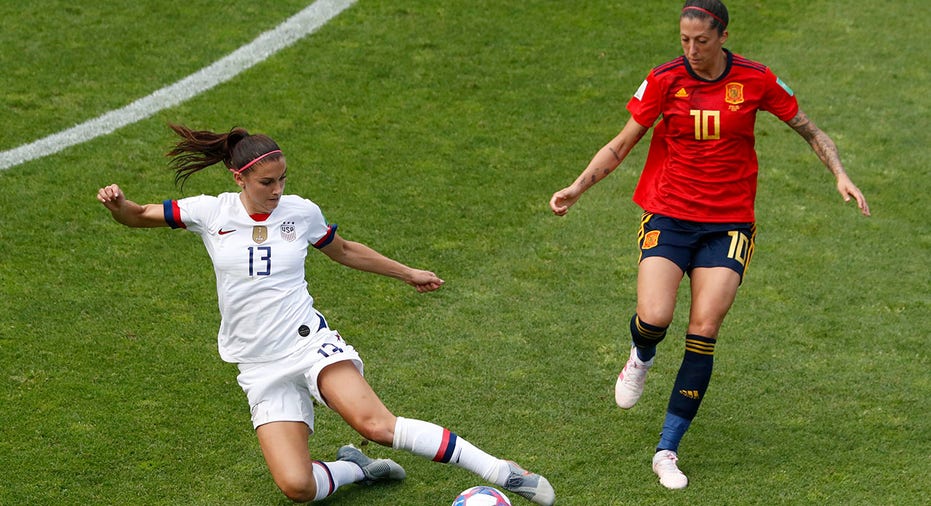As USWNT fights for equal pay, league revenue slows efforts to close salary gap
While a second straight World Cup victory lent further support to the U.S. women’s national soccer team’s fight for equal pay on the national level, revenue disparities have limited efforts to achieve salary equality in other U.S. women’s professional team sports compared to their male counterparts.
Alex Morgan, Megan Rapinoe and other members of the U.S. women’s national team are set to earn roughly $250,000 each for winning the 2019 World Cup, well below the pay the U.S. men’s national team, which has yet to win a World Cup, would receive for a similar run. Team representatives have argued that the disparity amounts to gender discrimination, saying the women's national team generates more revenue for U.S. Soccer than the men's team.
"Everyone is kind of asking what's next and what we want to come of all of this," star midfielder Megan Rapinoe said after the team’s World Cup victory. "It's to stop having the conversation about equal pay and are we worth it and should we and the investment piece. What are we going to do about it?”
While the U.S. women’s soccer team’s unprecedented run of success has attracted lucrative sponsorship deals and the support of countless public figures, the revenue windfall has yet to translate to the National Women’s Soccer League (NWSL). Without ticket revenue, top-dollar broadcast rights deals and meaningful investments from corporate sponsors approaching those of men’s leagues, women’s pro sports leagues have fewer financial resources with which to pay their players salaries that are on par with their male counterparts.
The U.S. pro sports pay gap
Formed in 2012 after the collapse of two previous attempts at a women’s pro soccer league, the NWSL is working to establish a consistent revenue model. The NWSL lists just four major sponsors on its website, plus a new partnership with Budweiser announced this month, and lacks a television deal for the full length of its season.
The MLS, which was established in 1995, lists 21 corporate sponsors on its website, including top brands such as Coca-Cola and Home Depot. The league’s current broadcast rights deal with ESPN, Fox and Univision was valued at $90 million, the largest deal in MLS history. MLS averaged an attendance of more than 21,000 fans per game for its 2018 season, compared to an average of just over 6,000 per game for the NWSL.
The NWSL and its counterpart, Major League Soccer, do not disclose their annual revenue. However, the NWSL operated with a salary cap of $421,000 for each of its nine teams during the 2019 season, with a minimum player salary of just $16,538 and a maximum salary of $46,200. The league relies at least partially on subsidies from U.S. Soccer, which covers pay for national team players.
SAN JOSE, CA - FEBRUARY 02: United States Goalkeeper Zack Steffen (1) makes a nice punch over the head of Costa Rica Midfielder Allan Cruz (13) during the US Men's National Team friendly soccer match against Costa Rica on February 2, 2019 at Avaya Stadium in San Jose, CA. (Photo by Bob Kupbens/Icon Sportswire via Getty Images) (Bob Kupbens/Icon Sportswire via Getty Images)
By comparison, the MLS set a minimum salary of $70,250 for its 2019 season. Top stars such as Zlatan Ibrahimovic and Wayne Rooney earn millions of dollars per season.
NWSL representatives did not immediately respond to a request for comment.
The disparity is also apparent in the WNBA when compared to its counterpart, the NBA. While the WNBA does not disclose its annual revenue, a league source told Forbes in 2018 that $60 million was a “conservative figure.” The WNBA’s top salary is capped at $117,500.
The NBA generates more than $8 billion in annual revenue, according to various estimates, with top players capable of earning $40 million per season. The league’s current television deal alone is worth $24 billion over a nine-year span.
An international issue
Members of the U.S. women’s national soccer team and U.S. Soccer have yet to resolve their legal dispute over alleged gender-based discrimination. While U.S. Soccer attributed the pay gap to separate labor agreements and “legitimate business reasons,” a recent Wall Street Journal report found that women’s games had generated $50.8 million for U.S. Soccer from 2016 to 2018, compared to $49.9 million for the men over the same period.
CLICK HERE TO GET THE FOX BUSINESS APP
Pay at the national level is just one element of a broader dispute. FIFA, international soccer’s governing body, has faced repeated calls to address a massive difference in the bonus pool for the men’s and women’s World Cup. The French men’s national team earned a combined $38 million for winning the 2018 World Cup, compared to just $4 million for the U.S. women’s national team at this year’s event.
United States' Rose Lavelle, left, is challenged by Netherlands' Danielle Van De Donk during the Women's World Cup final soccer match between US and The Netherlands at the Stade de Lyon in Decines, outside Lyon, France, Sunday, July 7, 2019. (AP Photo/David Vincent) (AP Photo/David Vincent)
Much as in U.S. pro sports, a difference in revenue is likely to blame for the gap. FIFA earned a reported $6 billion in revenue from the 2018 World Cup, according to various estimates. By comparison, the organization’s internal projections said it expects $131 million in revenue stemming from the 2019 Women’s World Cup for its 2019 to 2022 cycle.




















